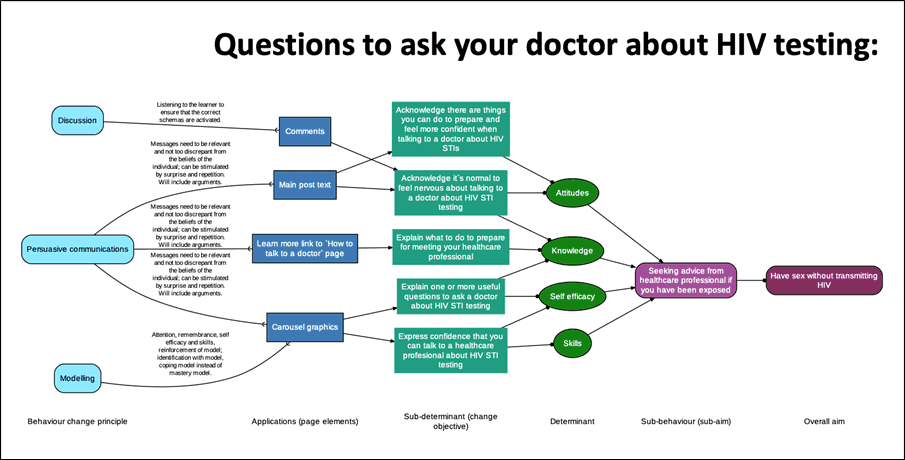The ABCD process has highlighted in detail the key change objectives, determinants and behavioural aims and sub-aims for each webpage and post. It has also highlighted a number of elements and approaches that could be considered in the future to increase the behavioural impact of the Be in the KNOW brand.
As a result of carrying out the ABCD process we have also reflected on how we can incorporate and institutionalise some of the behavioural analysis of this process into new content development and content review processes across our work, with new steps added and operationalised.
The next phase of the project is to compare the behavioural aims of these webpages and social media posts with actual user actions, and then implement improvements based on an analysis of the results. We will evaluate the success of the improvements in supporting achievement of change objectives, shifting behavioural determinants, and supporting intention to act on behavioural aims and sub aims.
Through the project we are aiming to better understand what makes effective health learning journeys online and we will continue to share learning across the sector as the project progresses.
For more information on this project contact Simon Moore, Director of Programmes at Avert.

